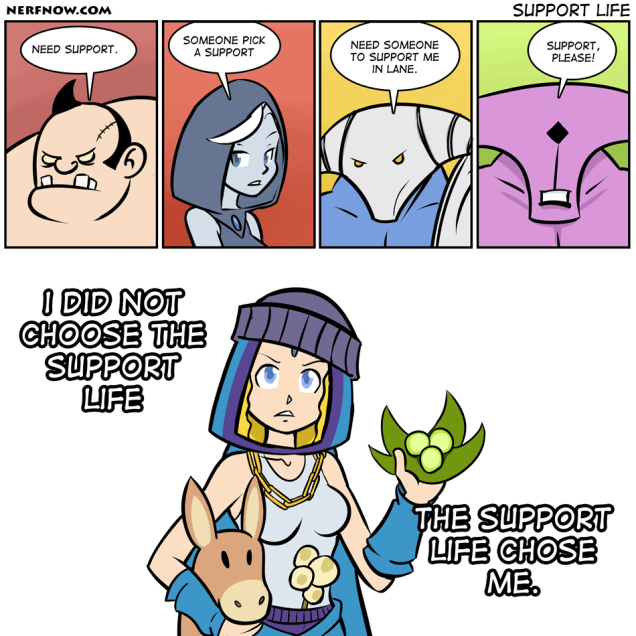A good link that looks at improved designed elements in Dota 2
http://2p.com/514bfffac01da10d80e6d192_1/A-Comprehensive-Look-at-Improvements-in-Dota-2.htm
1. Match Making Rating (MMR)
– Meant to be a numerical representation of a player’s skill that matches players against others with similar number. The higher it is, the better the player.
– Solves an issue of sorting players by their skill and giving them a way to view their own rankings compared to others
– Contrary to common types of player ranking which is typically leagues in games like Starcraft and League of Legends
– This drives players to act competitively with one another and put a high value on this number. Fuels players bragging and having toxic competitive play.
2. Dota 2 Chat Wheel
– Design is intended to give players a way to communicate without typing or voice chatting.
– Offers a diverse range of options contrary to Hearthstone and League of Legends. Hearthstone offers six chat options.
– Players typically use the chat wheel to communicate with their team effectively but it is frequently abused and spammed in a bad manner way.
3. Spectator mode
– Designed aspect that is meant to provide a simple, yet in-depth, way for players to view each others matches as well as tournament matches.
– League of Legends has a way to view the top matches as well as friend’s games but have not integrated a tournament spectating client such as Dota 2. Twitch is a very popular alternative for many games that lack a spectator client.
– Player behavior when spectating can vary as cheating can occur. But the interaction that is driven from this spectator mode is a more casual analysis of the game where players will talk about what is happening or joke around with each other. This mode is typically used as a back channel where players discuss the game sometimes but can frequently stray off topic.
4. Commending, Reporting, and Low priority. The player rating system.
– Intended to be a system that manages the community by sorting and rating the “quality” of a player.
– Many games have a reporting system and even a way to commend or upvote another player. These are generally used to sort out inappropriate behavior in games with general chat channels. But rewarding a player’s actions and gaining a positive reputation can vary in significance from game to game. League of Legends Tribunal, Xbox Live ratings, and even player content rating.
– This system is usually abused by players in Dota 2 as players report one another based on the fact they don’t like their game play or they are playing bad. This is not a legitimate reason to punish someone but, because they are frustrated, they do so. It drives a toxic competitive behavior because players can punish one another. On the contrary, the commending system is used when players like each other and think the other player deserves to be rewarded.
5. Chat channel
– Designed element created to solve the issue of communication between teams in game.
– Differs from other competitive games like League of Legends where all chat is by default turned off. In some games players cannot even talk with the other team throughout the duration of rounds or the game. Eg. Gears of War, Call of Duty, Super Smash Bros.
– Players in Dota 2 abuse both the team chat and the all chat to engage in toxic interaction with one another. Players are often flamed and verbally abused in this channel. However, these channels are still used to coordinate between the players and congratulate the other team on a game well played.


